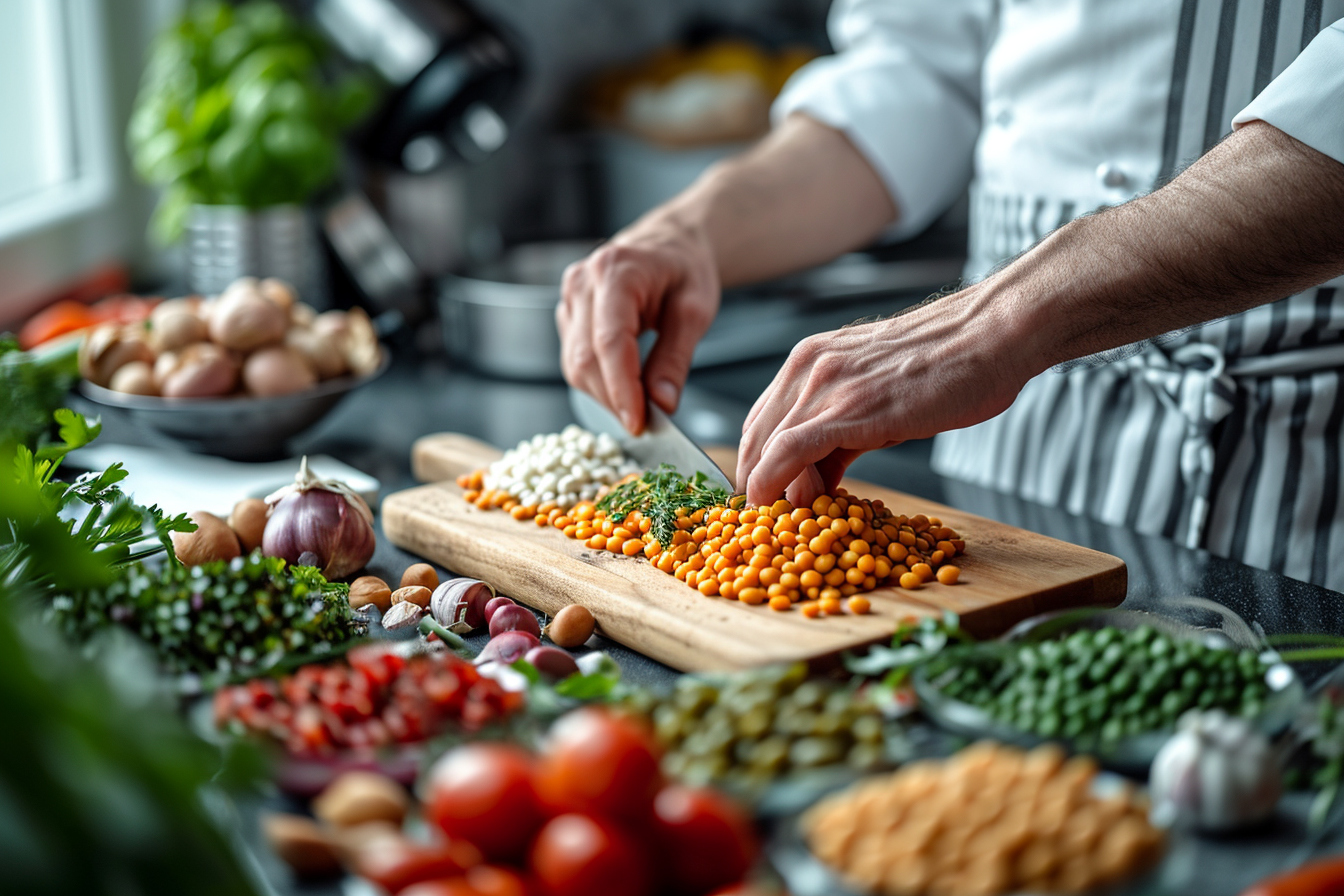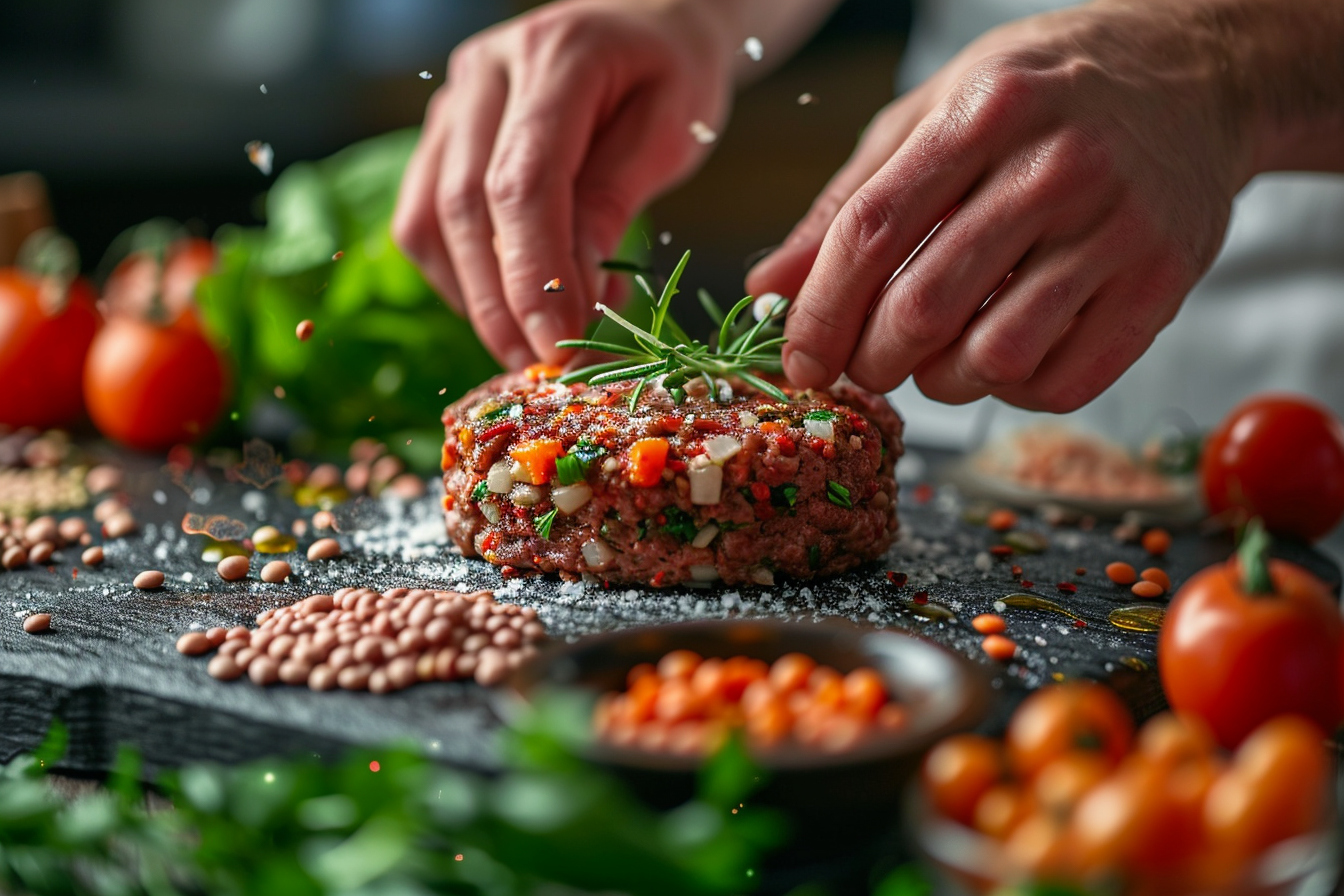
The shift towards plant-based diets has brought with it an increased interest in legumes as a nutritional powerhouse and versatile culinary ingredient. Legumes, including beans, lentils, chickpeas, and peas, are central to vegan cooking due to their remarkable nutritional profile, which includes essential proteins, fiber, vitamins, and minerals. Yet, to fully harness the gastronomic potential of legumes, one must delve into the art and science of vegan cooking, understanding the interplay of flavors, textures, and techniques that transform these humble ingredients into delectable dishes.
Nutritional significance of legumes in vegan diet
Legumes stand as the cornerstone of any vegan diet. Rich in protein, legumes provide the necessary amino acids that are often a concern in plant-based diets. The importance of integrating legumes into vegan meals cannot be overstated, especially because they also contribute to the intake of iron, magnesium, potassium, and B vitamins, all essential for maintaining optimal health.
The role of fiber and other nutritional benefits
Fiber, both soluble and insoluble, is abundant in legumes. This nutrient aids in digestive health and has been linked to reduced cholesterol levels, contributing to cardiovascular well-being. The high fiber content also brings satiety, which can help in managing weight and blood sugar levels, making legumes a beneficial inclusion for those with diabetes or those looking to maintain a healthy weight.
Selecting and preparing legumes for cooking
Before diving into complex cooking techniques, understanding and selecting quality legumes is vital. Dried legumes are preferable for their long shelf life and lack of additives, while canned varieties offer convenience but require attention to sodium content and potential preservatives.
The soaking and cooking process
The traditional approach to preparing dried legumes begins with soaking, which serves to shorten cooking time, enhance digestibility, and reduce compounds that can cause gastric discomfort. There are two main soaking methods:
- The Long Soak: Overnight soaking is the most common method.
- The Quick Soak: Boiling legumes for a few minutes and then letting them stand for an hour can substitute for an overnight soak.
After soaking, legumes are cooked until tender, a process that varies in time based on the type and age of the legume. Cooking can be done simply in water or with added aromatic ingredients such as herbs or vegetables to infuse additional flavors.
Versatile ingredient: crafting diverse dishes with legumes

The transformation of legumes into myriad culinary creations starts with fundamental cooking techniques and a dash of creativity. Vegan chefs often employ techniques such as pureeing for smooth soups, sautéing to build layers of flavor, and incorporating legumes into bakes for added substance and texture.
Creating rich, flavorful vegan stocks and broths
Building a rich vegan stock is an essential skill for deep flavor profiles in legume-based cooking. Caramelizing vegetables, including the aromatic holy trinity of onions, carrots, and celery, before simmering them with legumes, can provide a depth of flavor that rivals traditional stocks.
The use of legumes in alternative protein sources
One of the exciting challenges of vegan cooking is crafting alternative protein sources that are both nutritious and satisfying. Legumes can be transformed into vegan patties, meatless meatballs, and even vegan ‘ground beef’ using techniques such as grinding, binding with starches, and flavor layering through marinating and seasoning.
The art of infusing flavors into legumes
The next step in mastering legume-based vegan cuisine is understanding the art of flavor infusions. Since legumes have a relatively neutral taste, they absorb spices, herbs, and marinades exceptionally well, making them a blank canvas for a plethora of cuisines.
Working with spices and herbs
To maximize the flavor potential of legumes, a firm grasp of spice and herb combinations is crucial. For instance, using cumin, coriander, and turmeric can impart an Indian flair, while combining garlic, rosemary, and thyme can channel Mediterranean vibes. Toasting dry spices prior to cooking helps release their oils and maximize their impact on the dish.
Balancing flavors and textures
Balanced dishes require thoughtful consideration of flavor and texture. A harmonious vegan dish often includes a contrast of textures, such as combining creamy lentils with crunchy nuts or seeds. Acidity, sweetness, saltiness, and umami should also be balanced to elevate the main ingredient without overpowering it. Acidic components like vinegar or lemon juice can cut through the richness and refresh the palate.
Perfecting the art of vegan protein complementarity
While legumes are high in protein, they do not typically contain all essential amino acids in sufficient amounts. Thus, understanding protein complementarity is key to a nutritionally complete vegan meal. This involves pairing legumes with grains, nuts, or seeds that supply the missing amino acids, creating a complete protein profile.
Combining legumes with grains
The traditional combination of beans and rice is not just a staple in many cultures but also a smart nutritional choice. Cooking techniques that combine legumes with grains, such as incorporating lentils into a quinoa salad or chickpeas into a barley stew, ensure a well-rounded amino acid profile. For a twist, experimenting with less common grains like millet or spelt can add variety and additional nutritional benefits.
Innovative texture enhancements in vegan cooking
Texture plays a significant role in satisfaction with a meal. As such, innovative techniques such as pureeing for smoothness, toasting for crunch, and folding in ingredients to introduce chewiness or airiness can transform a dish’s mouthfeel.
Purees and mousses
Legumes can form the base for smooth purees and mousses, bringing silkiness to dishes. A well-prepared bean puree can serve as a rich spread, and a lentil mousse can be a delightful vegan dessert or savory component. The key to perfecting these textures lies in the details of blending time and the addition of ingredients that enhance creaminess, such as plant-based milks or oils.
Toasting and caramelizing for depth
Toasting legumes or using caramelization techniques can introduce new dimensions of flavor and texture. Whether roasting chickpeas for a snack with a crisp exterior and tender center or caramelizing onions for a deeper sweetness in lentil soups, these methods enrich the overall taste experience.
Advanced techniques and presentation
Beyond cooking for flavor and nutrition, presentation and employing advanced cooking techniques can elevate legumes to fine-dining status. Techniques such as terrine-making using lentil mixtures, creating intricate stuffed pastas with bean fillings, or even legume-based foams for gastronomic flair showcase the true potential of these ingredients.
Finesse in plating and aesthetic appeal
A dish’s visual appeal can be as important as its taste. Employing plating techniques such as the use of contrasting colors, thoughtful arrangement of components, and garnishing can turn a simple stew or salad into a dish that is visually arresting. Aesthetic appeal is a potent factor that can enhance the perceived tastefulness of a dish.
Future directions and trends in legume-based cuisine
The culinary world is ever-evolving, with plant-based cooking at the forefront of innovation. Chefs continue to push the boundaries, discovering novel uses for legumes and integrating them into surprising new forms and dishes. Vegan cuisine that relies heavily on legumes is no longer simply a necessity for dietary choice but has transformed into a celebration of sustainable and health-conscious gastronomy.
The evolving palette of vegan chefs
With the plethora of ingredients available, the vegan chef’s palette is richer than ever before. Newer ingredients like aquafaba, the liquid from cooked chickpeas, serve as an astonishing egg replacement, offering the ability to create vegan meringues and foams. Such innovations are testament to the versatility of legumes and the ingenuity of those who cook with them.
Legumes in sustainable and ethical cuisine
Given the ecological and ethical implications of food choices, legumes present a compelling option for those committed to responsible eating. As a crop, they fix nitrogen in the soil, reducing the need for chemical fertilizers and promoting agricultural sustainability. The growing appreciation for legume-based dishes reflects a global awareness of the need to reduce meat consumption for environmental stability.
The journey of mastering legume-based vegan cooking is endless, punctuated with continually emerging techniques, flavor combinations, and applications. For the gourmand, home cook, or professional chef, the legume presents a canvas of endless culinary exploration, where creativity meets conscience, flavor meets nutrition, and tradition marries innovation.